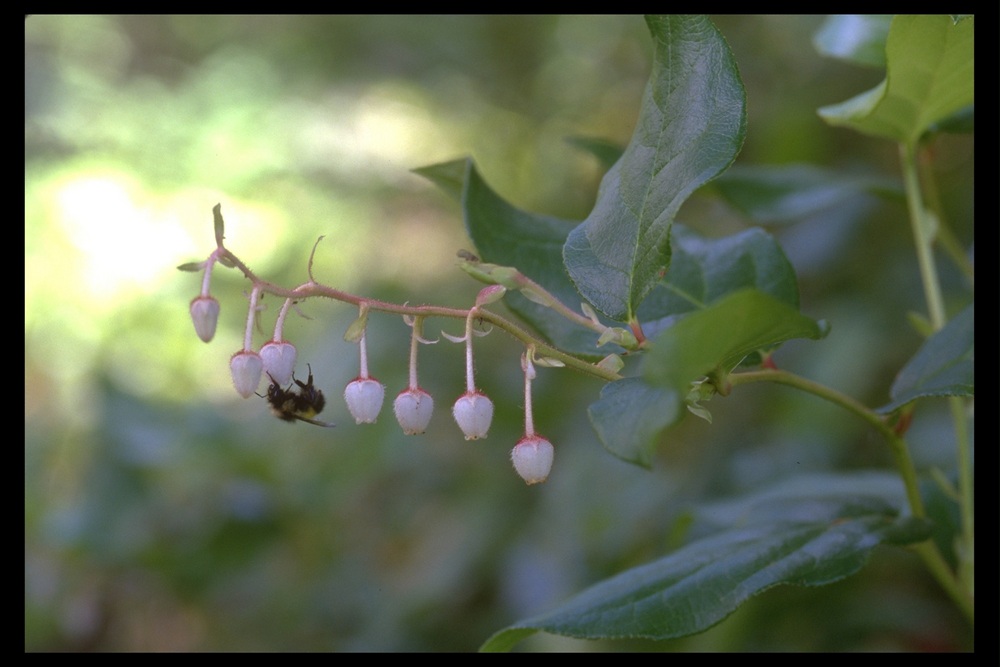Both Meriwether Lewis and William Clark wrote about salal (Gaultheria shallon), which they first encountered on the Oregon Coast near Astoria in 1806. They noted that elk fed on its leaves and that Natives dried the dark purple berries in cakes or loaves.
Salal is a handsome and resilient evergreen understory shrub found in coastal forests from British Columbia to southern California. It is notable for its dark green oval leaves and its purple-to-black berry-like fruits. Salal can grow so densely that extensive populations growing in clearcuts and burned areas may interfere with reforestation. The fruit serves as food for a variety of native animals that help distribute the seeds.
Native Americans made great use of salal as a medicine (dermatological and gastrointestinal aids and cough medicine), food (berries, dried or cooked), dye (purple from fruits, yellow from leaf infusion), and untensils (stems used as cooking tools).
The plant's common name, salal (and its specific epithet shallon), is derived from Chinook Jargon salla (kl-kwu-shá-la). Today, berries are made into jams and preserves. The floral industry uses salal as background greenery in floral arrangements, and thousands of workers harvest the plant throughout its range.
-
![]()
Salal.
Courtesy of Bureau of Land Management
Further Reading
Jensen, Edward C., Dale N. Bever, Warren R. Randall, and Robert F. Keniston. Manual of Oregon Trees and Shrubs. Corvallis: John Bell and Associates, 2002.
Moerman, Daniel E. Native American Ethnobotany. Portland: Timber Press, 1998.
Phillips H.W. Plants of the Lewis & Clark Expedition. Missoula: Mountain Press. 2003.
Pojar, J., and A. MacKinnon, eds. Plants of the Pacific Northwest Coast: Washington, Oregon, British Columbia & Alaska. Vancouver: Lone Pine Press. 2004.

